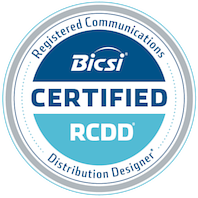SIP vs. VoIP vs. PBX
The best way to understand SIP, PBX, and VoIP is not to compare them side-by-side as if they were three different communication directions. Instead, it would be more helpful to consider each one of them and what their role is in communication. The fact of the matter is that all three of these technologies work together to provide cutting-edge communications. By considering each of these components on their own merits, you’ll be able to understand how they relate to each other, and how they collectively provide the most modern form of communication.
There’s no question that the business World relies on communications in order to make things happen and to conduct commerce. Without efficient lines of communication between buyers and sellers, there probably would be very little business that ever gets conducted. However, in the modern world, face-to-face communications are generally not possible between the players involved in any transaction. That means that the majority of any communication efforts conducted by businesses will take place over telephone lines or over the Internet.
Given the fact that such massive amounts of data are transmitted on a daily basis across worldwide networks, it becomes extremely important to have communication connections that are efficiently managed, so as to prevent chaos from developing. That is the basic reason for such technologies as SIP, PBX, and VoIP to receive major play in the business world. Here’s how these three crucial technologies work together to provide solutions to the massive communication requirements of today’s business world.
Session Initiation Protocol (SIP)
SIP is comprised of a set of standards for signaling, setting up, connecting, and disconnecting any kind of communication sessions that take place over the Internet, whether they’re voice or video. SIP technology allows us to locate devices on a network, and to connect as many parties as are necessary. An important part of SIP technology is the signaling which occurs between devices when they’re trying to establish a connection.
The signaling protocol is sometimes referred to as SIP trunking, and it helps one device locate another device before making a connection. Then it ensures that they’re listening, and it allows for data to be transferred in either video or voice format. SIP allows for meaningful communication to take place between parties all around the globe, whether they’re using desk phones, computers, or mobile devices. It’s safe to say that SIP technology is a major component of cloud telephony and that it helps businesses actually harness the power of VoIP.
Private Branch Exchange (PBX)
Any business seeking a communications solution will inevitably arrive at PBX, which is a business-grade phone system featuring communications for both internal and external usage. Obviously, this is an essential aspect of any business, and it must be used in order to conduct daily operations. Some of the features included in this communication protocol are extension dial, waiting for queues, call re-routers, hold music, and call conferencing.
Every time you place a call to a business that has an automated answering system, you might encounter one or more of these features. As opposed to the kind of system you’d find on a residential phone line, PBX connects business employees with each other and with the outside world. Modern-day PBX relies on the usage of hosted PBX or virtual PBX. This service places a phone system in the cloud, rather than trying to squeeze it all into a telecom closet like in the past.
A hosted PBX will be maintained by a number of different service providers, and it will connect businesses using the Internet with the help of some SIP trunks. These trunks are generally bundled right into the hosted platform for easy usage. Rather than installing a physical phone system right at your location, a hosted PBX will eliminate all the maintenance costs, software upgrades, and service downtime which are generally associated with a physical phone system.
Voice Over Internet Protocol (VoIP)
When talking about Voice Over Internet Protocol, the protocol that’s actually referred to is SIP. VoIP is a broad term that applies to any phone call initiated over the Internet, and VOIP is the action taken to digitally transmit video and voice signals to another party somewhere. There are a number of other terms which are frequently used to refer to Voice Over Internet Protocol, including broadband phone service, broadband telephony, IP telephony, Internet telephony, and voice-over broadband.
Whenever you hear any of these terms, they are all referring to the same thing, VoIP. The basic requirements of VoIP are having VoIP software and a phone system that is VoIP-enabled. These components will allow you to make and receive calls over an Internet connection. One of the major advantages of VoIP is that it’s no longer necessary to tolerate all the clutter associated with a physical phone system in the office place, and it does not require mobile phones to manage the communications workload.
Any company which has VoIP installed will have the professional appearance of an official business line of communication, regardless of the business location. VoIP can accomplish this by using a number of well-known applications such as Skype or Google Talk, and also by providing the ability to apply IP-enabled PBX hardware.
Conclusion
Still going back and forth? No worries. Contact us today, and one of our VoIP phone experts can walk you through the solutions.
When you need business VoIP phone systems, structured cabling solutions, cell signal boosting, or Internet and voice data solutions and much more, please contact us at Telco Data. We will always be able to deliver the most effective and affordable solutions for your business needs, and our customer service is second to none in the industry.
FAQs About SIP vs VoIP vs PBX
How do these three components work together?
A hosted PBX service will make use of SIP in order to connect VoIP endpoints such as a VoIP telephones or apps on a mobile device. Any business will have its PBX use SIP trunks in order to make a VoIP connection.
How long have these technologies been used?
PBX first appeared in the 1970’s, and has been upgraded since then to work with VoIP. Both SIP and VoIP first came into usage in the middle 1990’s, when it became apparent that the Internet could be used for communications rather than phone lines.
How many businesses currently use VoIP?
Approximately one-third of all businesses are using VoIP technology, and that percentage will likely grow in the near future as more become aware of its advantages.
How much money can I save by switching to VoIP?
Most businesses will realize a savings of between 50% and 75% when switching to a VoIP system. This is a significant amount of money that may then be spent on other business needs.







